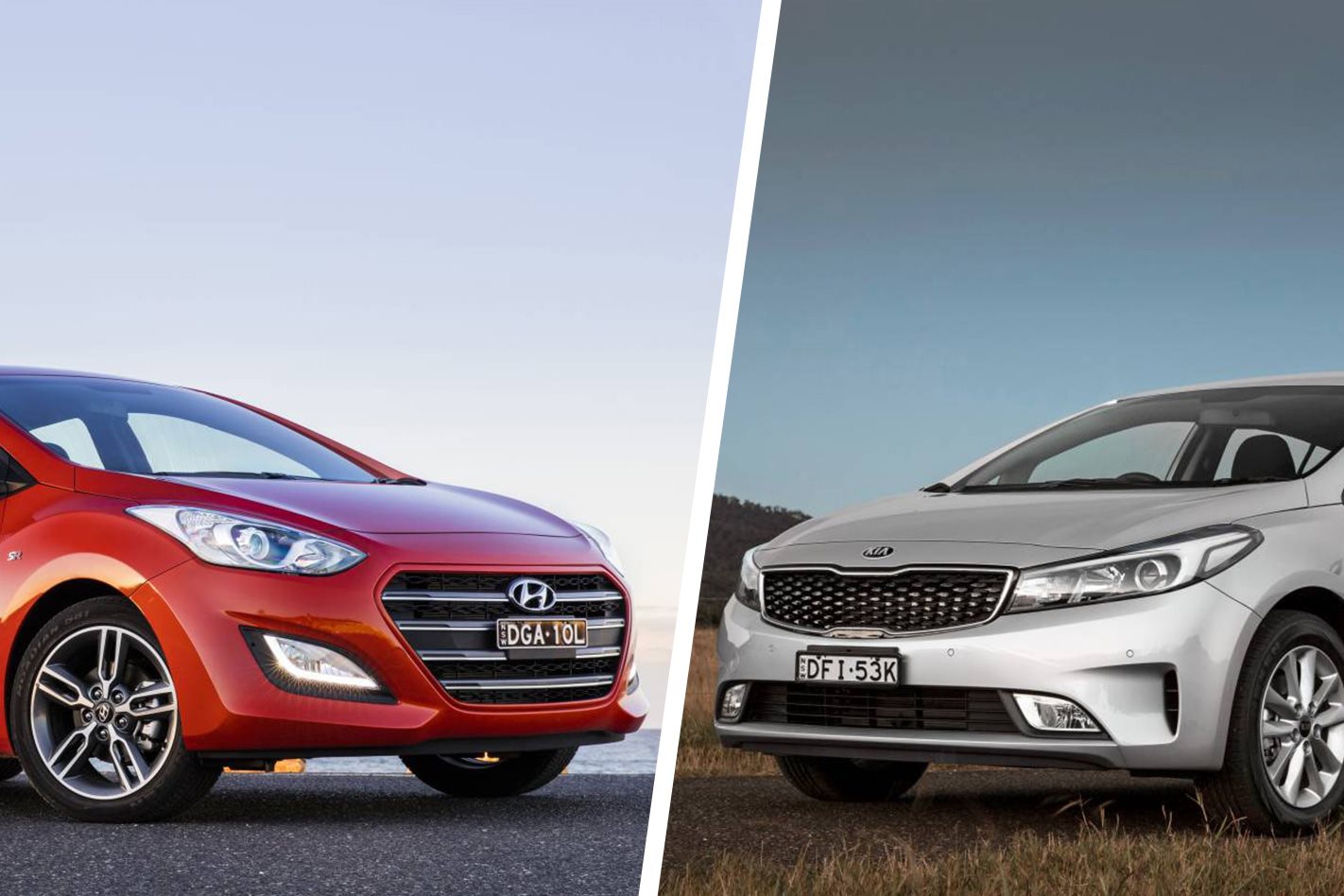
HYUNDAI I30 SR Score: 73/100
Price & Equipment | 16/20
Price and platform similarity sits at odds with philosophical differences in the i30 SR and Cerato Si. The Hyundai is sportier to look at than to drive, while it’s the reverse in the Kia, yet they perform on a similar plane, and share rear parking sensors, reversing camera, auto headlights, LED DRLs, leather/synthetic trim, cruise control, sat-nav, and7.0-inch colour touchscreens.
Interior & Versatility | 15/20
Deeply bolstered front seats give the feel to complement the SR’s sporty interior touches, and bring extra lateral support. Smart packaging means there’s similar rear legroom to its rival despite a 50mm-shorter wheelbase, but no rear air-con outlets. The Hyundai hauls 378 litres of luggage, or 1316 litres with its 60/40 split-fold rear seats folded.
Performance & Economy | 14/20
The i30 SR’s 2.0-litre four offers decent refinement but doesn’t tickle the senses like a warm hatch should. Healthy 124kW/201Nm outputs translate via a six-speed auto (or six-speed manual) to modest performance, hampered by a kerb weight nearing 1400kg, and its 7.7L/100km fuel number is adrift of the class best.
Ride & Refinement | 15/20
Only the fact that the Hyundai has a slightly sporty leaning makes it a fraction less absorbent as an urban appliance. Its locally tuned strut and torsion-beam suspensions work adeptly on a variety of Australian road surfaces, from the sharp edges of run-down city streets to undulating coarse-chip country roads, where it’s also pretty quiet.
Steering & Handling | 13/20
A lack of steering enthusiasm and feel comes (along with the engine’s lack of sparkle) as the chief reason the i30 SR isn’t a hot hatch, or a particularly inspiring warm one. But it works here because the obedient, grippy and well-balanced Hyundai merely needs to be the sporty mid-to-high-spec small Korean hatch alternative.
KIA CERATO SI Score: 74/100
Price & Equipment | 17/20
Cerato gets ample active safety gear including blind-spot detection, lane-change assist, rear cross-traffic alert and front parking sensors, but misses out on a driver’s knee airbag, dual-zone climate and auto wipers. It also rolls on 16-inch alloys rather than 17s, which, with a more conservative exterior, makes for a subtler visual package.
Interior & Versatility | 15/20
Aside from a token bit of faux carbonfibre, the Kia cabin is more restrained, but offers ergonomics and seat comfort to match the Hyundai, and similar conveniences and space. Plastics and leather/synthetic seat trim finishes are consistently decent, the boot swallows 385 litres, and there’s a full-size alloy spare, as in the i30.
Performance & Economy | 14/20
A 2.0-litre producing slightly less (112kW and 192Nm) works with a bit less weight in the Kia – about 1330kg – to give the auto-only Cerato Si real-world urge to match the i30 SR, with slightly better economy of 7.1L/100km. A comparable 50-litre fuel tank enables the thriftier Kia to go a bit further between fills, too.
Ride & Refinement | 15/20
Kia’s blend of ride and handling is perhaps the biggest departure from Korean cars of old – it’s a decent steer – but not from its rival. Well-judged spring, damper and roll-bar rates give it a relaxing gait with just the right balance of compliance and discipline. It’s softer, then, but not to the detriment of dynamics.
Steering & Handling | 13/20
The Kia is the one for the downsizer who isn’t necessarily seeking sportiness – or athletic visuals – but still appreciates chassis cohesion. The Cerato’s steering is on the same page as the i30’s, while the handling tends towards stability rather than adjustability or involvement, and the suspension compliance ensures it copes over lumpy roads.
THE VERDICT
Where you place the Hyundai i30 SR makes a big difference to how you view it. Consider it a warm hatch and perhaps it misses the mark. But as a well-equipped small hatch with a sporty look, it might be a bit more appealing to a certain buyer than the more sober-looking Kia Cerato Si. For every equipment hit, there’s a miss, leaving a pair of well-equipped hatches that don’t necessarily go gadget-for-gadget. Official – and real-world – retained values are difficult to split, but the Kia holds a warranty advantage at seven years (though the Hyundai’s five-year cover is already generous). The i30’s grippy front seats, 17s, and sports suspension make it a fraction more fun, but it’s no quicker than the Cerato Si, which uses slightly less fuel. Overall, there’s very little in it.



